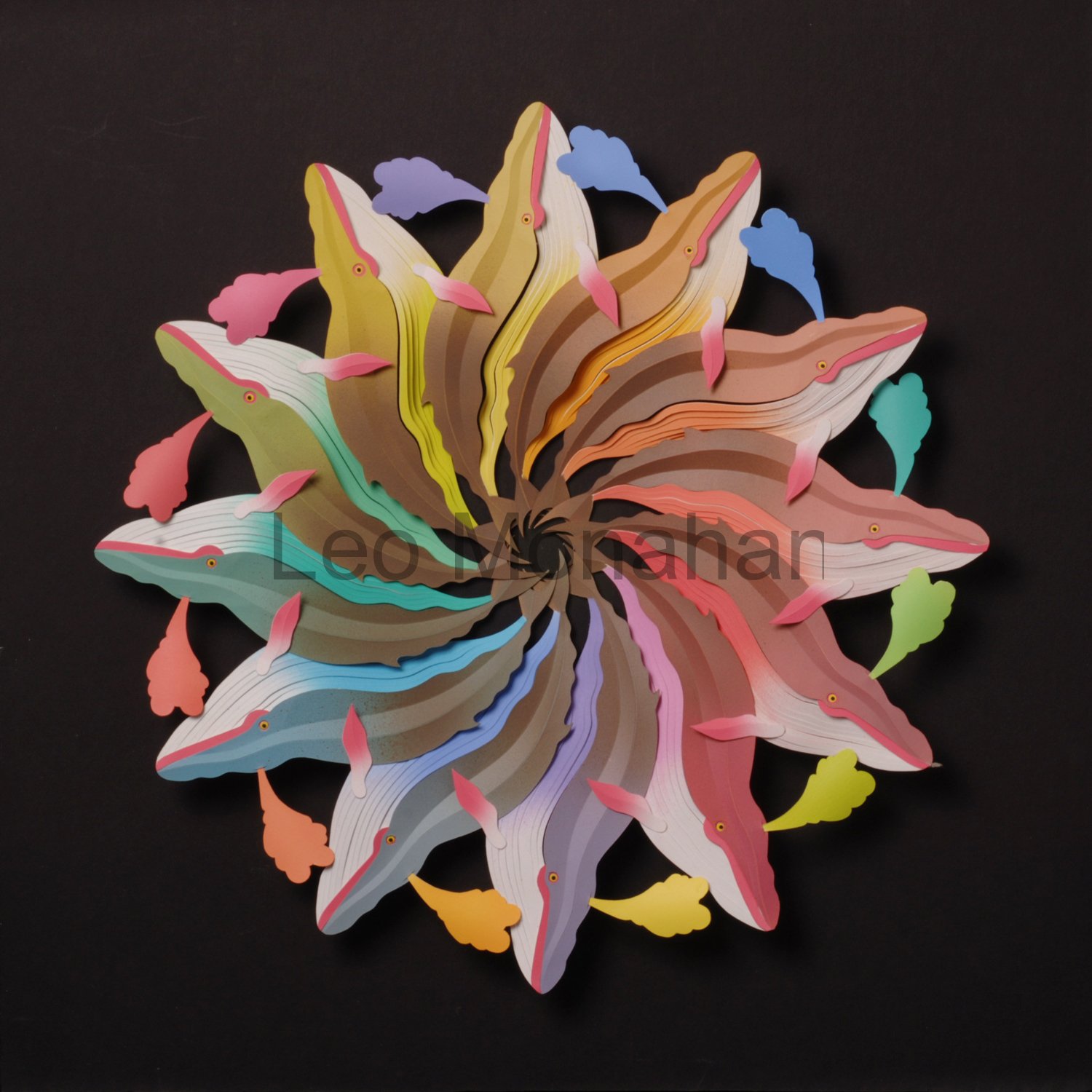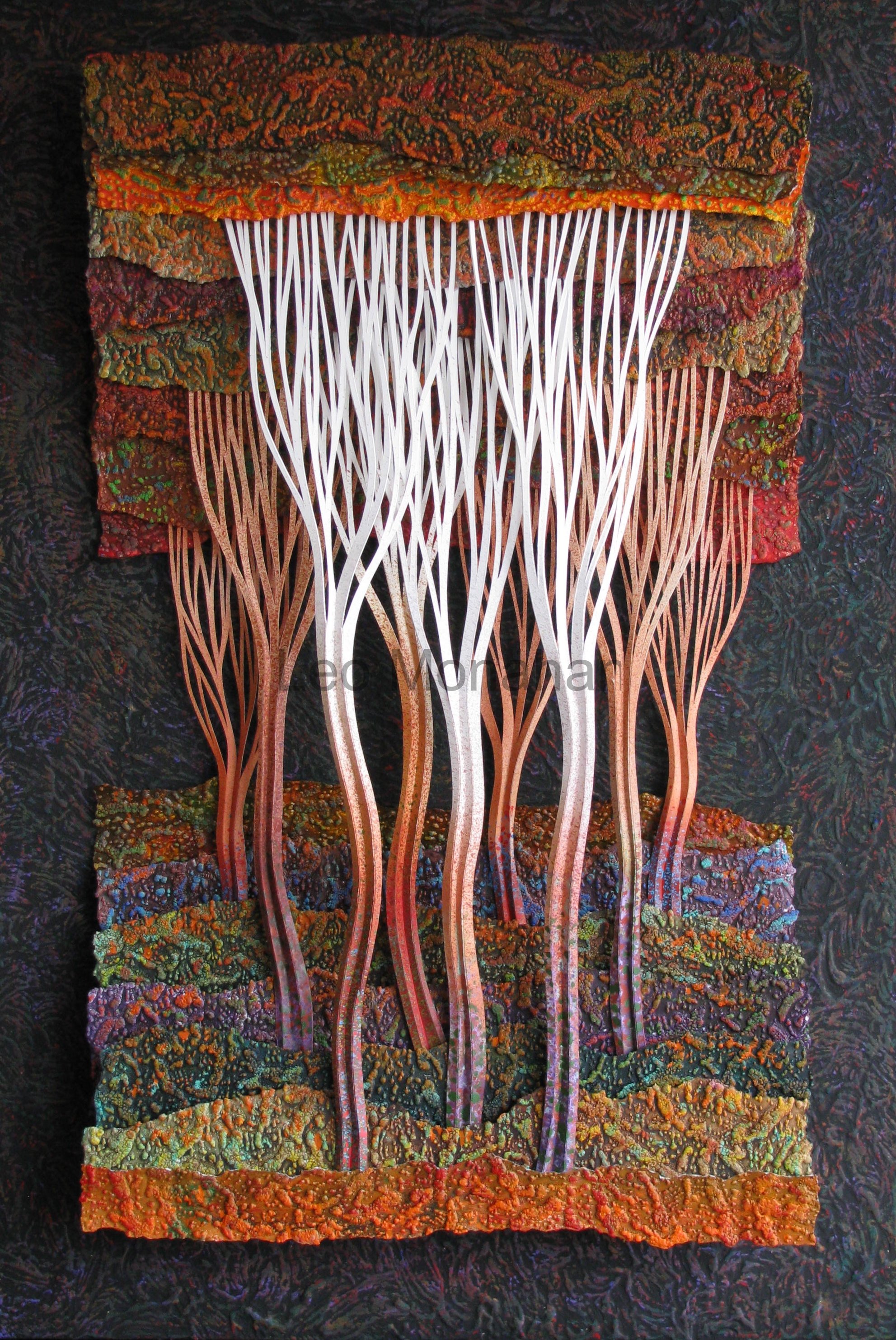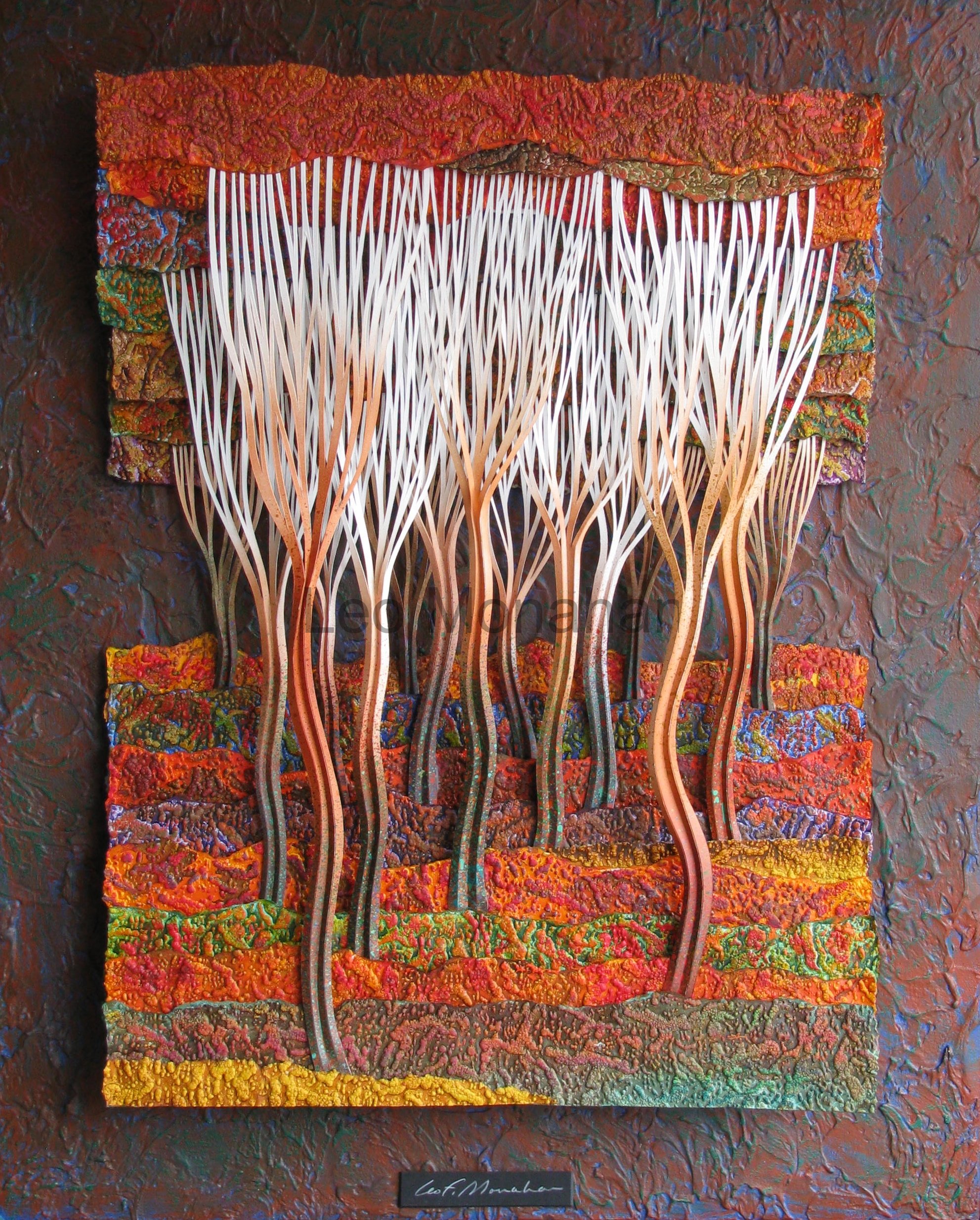Dear reader,
Spring, and the air here in the mountains is delicious. The flowering trees are white, pink, and violet. Blooms are coming up and we have to mow the damn grass every week. I think I’m going to plant invasives, they seem to do so well. Tons of pollen in the air, but allergy isn’t my problem. I wanted to raise chickens, so I planted a row of eggs every ten inches and about four inches deep. I fertilized and watered them regularly but nothing came up, so I wrote to the county agriculture department, told them my sad story and asked them to solve my dilemma. They came out and took a soil sample. No chickens, but I met some nice people.
Spring is the season when, as a boy, I could always collect the penny deposit on pop bottles and buy a big, side-by-side, double-dip ice cream cone. I took my shoes off about the same time, and none of us boys put them back on until snow fly. There were some 250 people strung along five miles of creek at Keystone, SD. Although lots of them had cows, ice cream was dear because of the sugar rationing during the war. All the men had gone off to fight, and we boys lived like Huckleberry Finn. Work had stopped on Mount Rushmore, and it looks now pretty much like it did then.
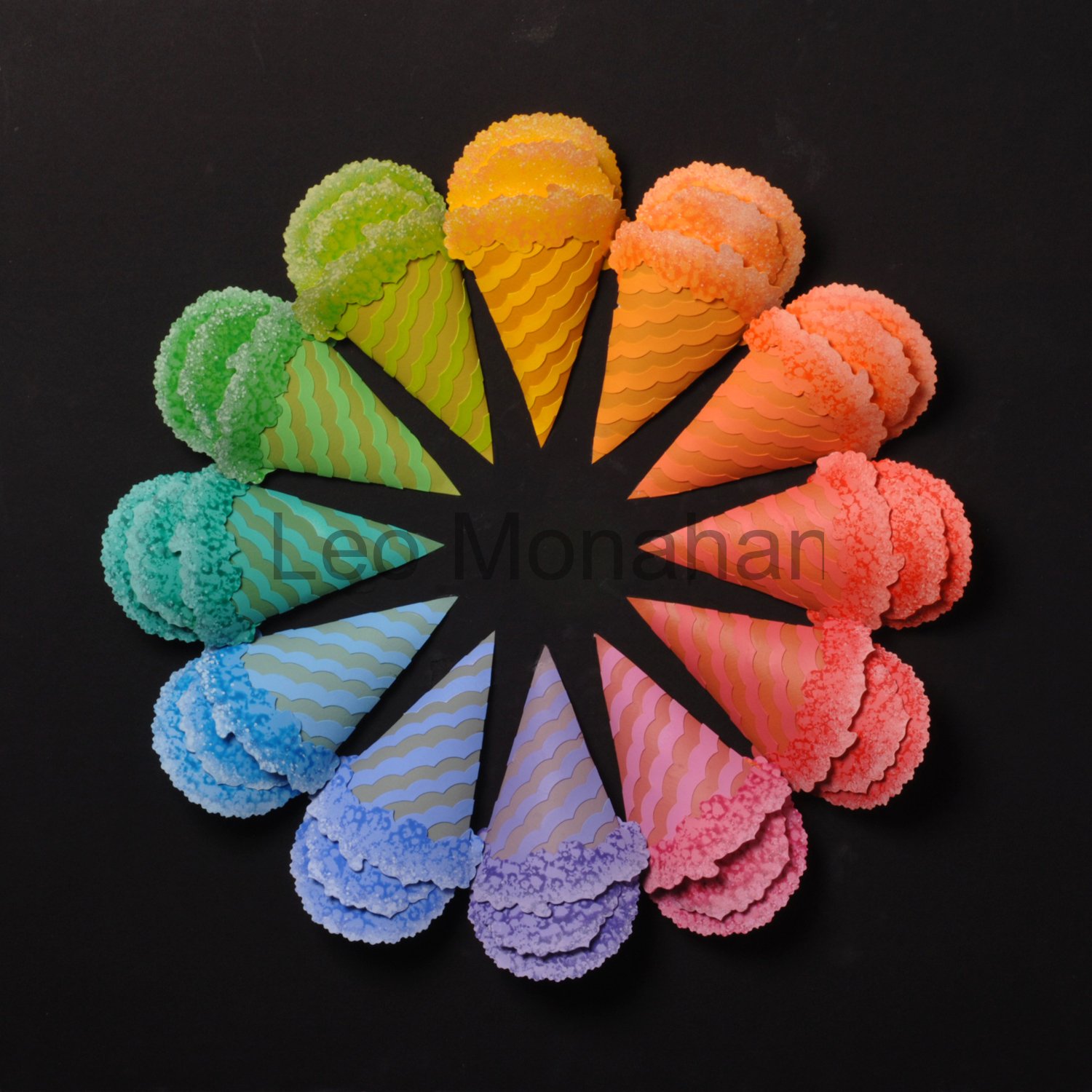
Ice cream cones like these are my fantasy. Ice cream of every color and flavor warms my heart and gives me a headache just above the eyes. The cones here are all 12 colors of the color wheel. Each ice cream and its cone are the same color. The ice cream is outlined with a texture of white to indicate dimension, and the cones have stripes painted in the same color but toned down slightly with a complement. The cones are curved to give dimension and produce soft shadows when viewed or photographed.
A very simple image, but the memories it brings up from my childhood are unforgettable. Like the time I found a 50 cent piece in the dusty street in front of the small post office in Keystone. I went into the post office and showed it to Mr. Manion, the postmaster and only employee. He said that I should buy five, 10-cent saving stamps toward a $25 war bond. We were all saving stamps, and I’ll be damned if I didn’t do it instead of getting a whole bunch of ice cream cones. 50-cents would be like finding a fortune now, if you think back that hamburgers cost a dime in the 40s.
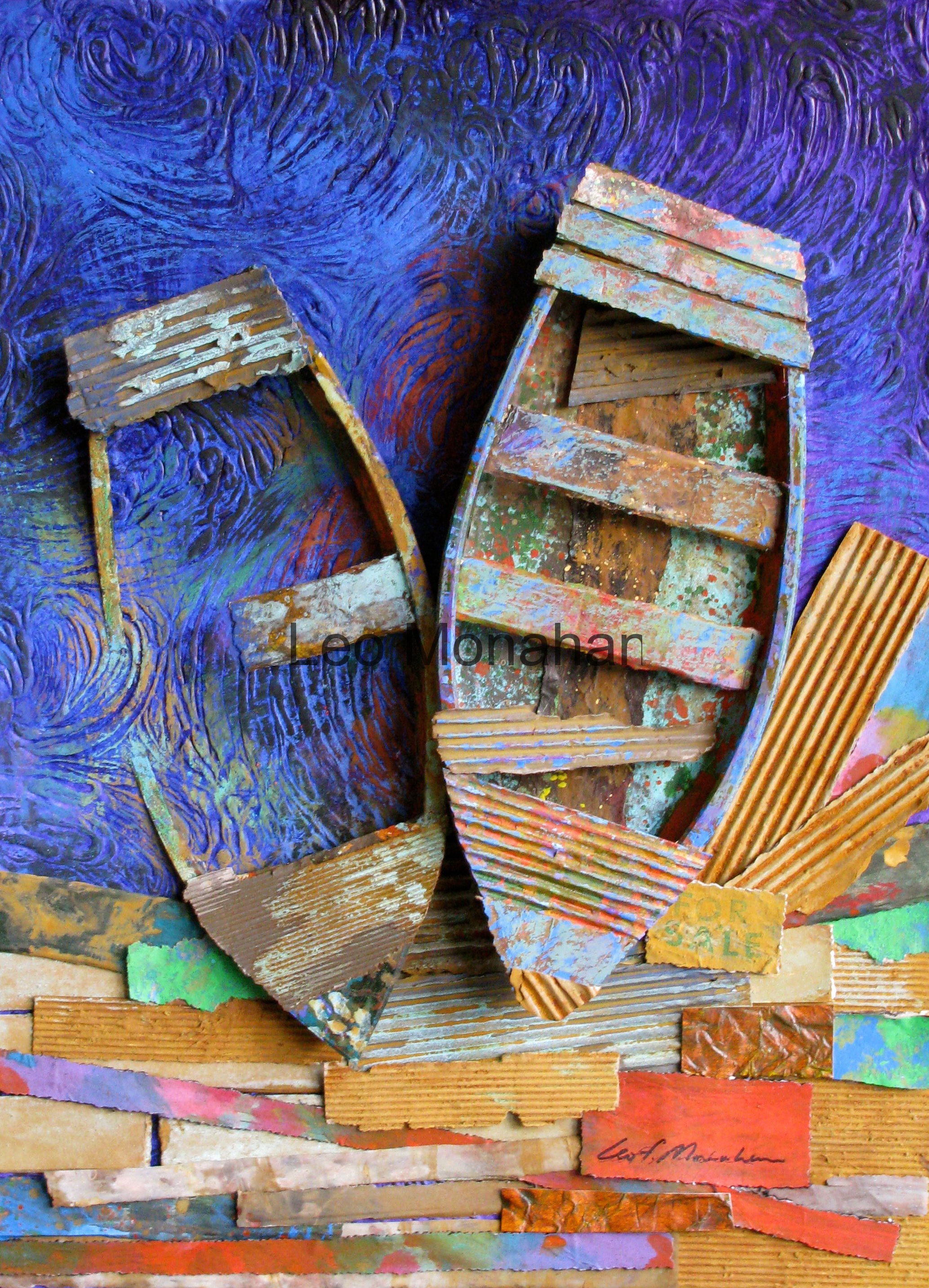
Keystone was an old gold rush town and everything was old, rusty, broken or falling down. A cold mountain “crick” flowed through town and was our main playground; swimming holes in the summer, and ice-skating in winter. There are several lakes in the hills nearby, and we commonly walked six miles to Horsethief Lake to dare each other to swim across. Not me; that was the coldest damn water I can remember. There, tied to trees, were always a lot of beat-up rowboats, half full of water or sunk all together.
I love the texture of age. Rust, corrosion, peeling paint and rot are my palette. This is a small piece, 16 x 20”, and strong direction is not the intent. The conditions, contrasts, textures and story behind the boats are the topic. The colors of the boats are predominantly warm, with some cool accents to enhance the effect. Every form of corrosion that I could devise is in there. The water is dark, intense blue to contrast with the boats and trash on the dock. The colors on the boats and trash are all neutral, while the water, trying to be pure, reflects a summer sky. The sunken boat is strictly for story.
“Fred, dammit! Who let my boat sink like that there? Yours seems to be holding up, piece of crap that it is. Mine’s in better shape, but the sonofabitch is under water, as any boat-sinking idiot can plainly see. Have your boys been playing out here again? Last time they busted the oars. Dammit, where’re those oars anyways?”
“Jimmy, we go through this ever year. Let’s pull it up, get the water out and patch the damn thing up again. Last time I saw the oars, you used them to hold up your chicken house roof. As a fact, where in hell are my oars?
They better not be part of your chicken shed. To hell with it all, it’s too damn hot to be out here. Let’s open a couple of them beers and set awhile.”
“Ok, we’ll go to my place and get the oars later.”
Thanks for visiting me. Same old stuff next time…
leo
Jimmy’s Boat 17.5 x23.5″ is available for $2500 at the Cut, Bend, Fold, ColorColorColor exhibit at the Grovewood Gallery. The Ice Cream Cones are not available.

